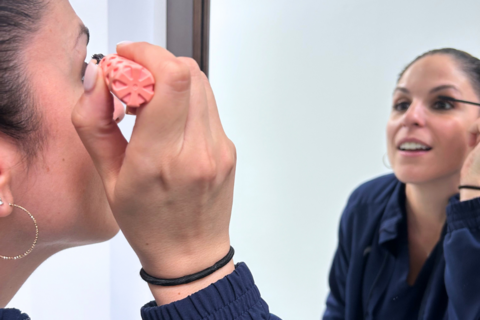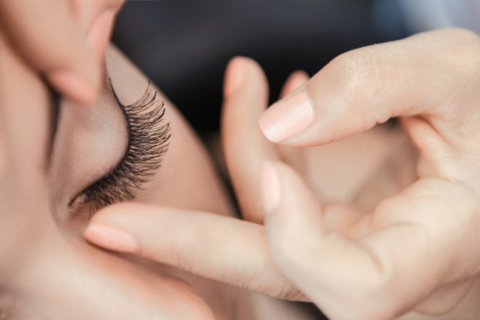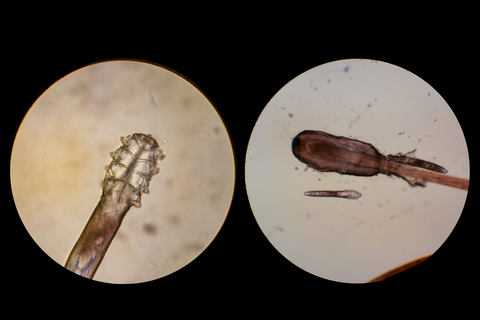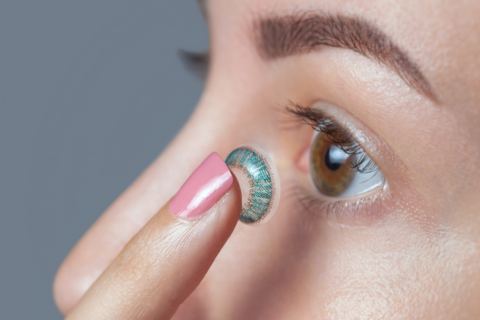
Dr. Olivia Ricci, OD, FAAO
By Jade Lankowski
Eye makeup and other beauty products can cause irritation to the eyes or worse – they can result in styes, the worsening of dry eye disease, even an overgrowth of microscopic mites in the eyelashes. However, quality cosmetics are safe when used correctly. Dr. Olivia Ricci, a residency-trained optometrist and assistant clinical professor with the University of Waterloo School of Optometry and Vision Science, explains how to maintain your eye health when using a range of beauty products.
Is it safe to wear false eyelashes and lash extensions?
Even though Ricci recommends mascara as a safer option, false eyelashes and eyelash extensions are generally safe for your eyes if they are applied and maintained correctly. Eyelash extensions should always be applied in a clean, professional environment by an experienced eyelash technician with chemicals that are safe for the skin. Ensure that you know what ingredients are used during the application process to prevent irritation. For false lashes, be sure to apply the false eyelash carefully, avoiding contact with the eyes. Also, do a patch test before applying the eyelashes to the eyelid.
To do a patch test, simply apply a small amount of eyelash adhesive onto your hand to ensure there are no signs of irritation. Signs to watch out for include redness, pain or swelling. If the skin on your hand is unchanged by the patch test, it is safe to apply the product near the eyes but still be mindful to look for signs of a reaction, as eyelid skin is very thin and sensitive. If the skin on your hand becomes irritated from the patch test, do not use the product.

How can you keep your eyelashes, real or fake, healthy and clean?
To keep your eyelashes healthy and clean, makeup users and extension wearers should focus on eyelid hygiene by washing the face daily. This is especially important for those who wear false eyelashes, as these often harbour bacteria and debris.
To clean your eyelashes, use circular motions gently around the base of the eyelashes with a facial cleansing product. Ensure your eyes are completely closed during this process to prevent the product from getting in your eyes. This applies to all facial cleansing products, including gels, creams, soaps, foams and wipes.
Can you get mites living in your eyelashes/lash extensions?
Demodex are microscopic mites that eat dead skin cells found on both real and false eyelashes. Demodex are known to collect at the base of the eyelashes.
It’s normal to have a small amount of these mites in or on the skin – almost everyone has them. Demodex will go unnoticed without issues unless they overpopulate. Overgrowth can be exacerbated after getting eye lash extensions, because there is more surface area for the mites to hang on to. This may occur if you are not properly and regularly cleaning your eyelids.
Although it is unusual for demodex to cause major issues with proper eyelid hygiene, severe cases that are left untreated can cause dry eye disease, recurring styes, redness, swelling of the eyelids and itchiness. Demodex damages the follicles, so they could cause eyelash damage and loss that may be permanent.
Your eye care practitioner can examine your eyelashes closely by using a slit lamp biomicroscope. If demodex is present, your optometrist can offer different products, such as gels and wipes, depending on the severity of the mites and the patient presentation.

How can you wear your eye makeup most safely?
Makeup residue that builds around the eyes can block and ultimately damage the meibomian glands, which produce the secretions that are a necessary part of tears. To avoid this and prevent other irritation, wash your face and eyes daily, especially after makeup use. Also, to protect the meibomian glands, avoid wearing eyeliner along the inside of the eyelash line, as there are oil glands there.
Also, don’t use cosmetic products past their expiration date, which can be located easily on every makeup product. As a rule, mascara should be replaced and/or discarded every three to four months, eye shadow palettes every six to 12 months and eyeliner every six months.
How can you remove eye makeup most safely?
To remove makeup safely, again do a patch test of the cleansing product before applying it to your face. This includes wipes, foams, lotions and soaps. To prevent bacteria buildup, focus gently on the base of the eyelashes with your cleanser of choice.
Ricci highly discourages sleeping in makeup, as it traps dirt and bacteria. Eye makeup debris can get into the eyes during sleep and cause irritation, dry eye disease, and inflammation.
Are serums and creams safe for the skin around the eyes?
Eye serums and creams are safe to apply to the skin around the eyes if used correctly. After doing a patch test, it’s best to use the recommended amount of product, as indicated in the product’s instructions, and evenly distribute it on the skin around the eyes. Be sure to avoid direct contact with the eyes.

Are coloured contacts safe?
Like regular contacts, coloured contacts are safe to wear if they are fitted and checked by an eye care practitioner. Over-the-counter coloured contacts, bought from a beauty supply store or online, can cause eye irritation, infection and corneal damage in some cases.
It’s important to consult your eye care practitioner so you can be properly fitted for your coloured contacts. Also, ensure that you are following proper contact lens care directions for cleaning, disinfecting and wearing the lenses – same as you would for regular contacts.
Is surgery to change your eye colour safe? What about eyeball tattoos?
Optometrists, like Ricci, strongly advise against surgery to change eye colour. Ricci also strongly advises against eyeball tattoos. Surgery and tattoo treatments put you at unnecessary risk of infection, high eye pressure, inflammation and permanent vision loss. If you would like to temporarily change your eye colour, see your eye care practitioner for a coloured contact lens fitting.
Reviewed by Dr. Olivia Ricci, OD, FAAO